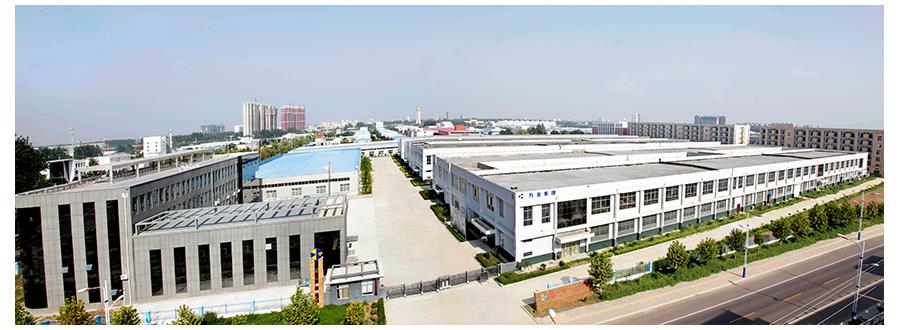Brief Introduction
PDC Cutter for coal mine are produced by sintering diamond powder and cemented carbide substrates under ultra-high pressure and high temperature conditions. Polycrystalline diamond composite sheet not only has the high hardness, high wear resistance and thermal conductivity of diamond, but also has the strength and impact toughness of cemented carbide. It is an ideal material for manufacturing cutting tools, drilling bits and other wear-resistant tools, and it is also a function. New breakthroughs in materials. The polycrystalline diamond composite is a composite material in which a polycrystalline diamond thin layer is adhered and adhered to a cemented carbide substrate. The PDC Cutter for coal mine combines the high wear resistance of polycrystalline diamond and the high impact resistance of cemented carbide. The diamond layer is sharp and self-sharpening, and can always maintain the sharpness of the cutting edge. Therefore, it is very suitable for the exploration of soft formations in oil and geological drilling up to medium-hard formations. The effect is very good. The diamond content in the polycrystalline diamond compact is as high as 99%, so the diamond layer has extremely high hardness and excellent wear resistance. Its Knoop hardness is 6.5×104 to 7.0×104 MPa and even higher [Knowledge Tip 1]. The cemented carbide substrate overcomes the hard and brittle insufficiency of polycrystalline diamond and greatly improves the overall impact toughness of the product. The easy solderability of the hard alloy solves the problem that the polycrystalline diamond is difficult to combine with other materials through the welding method, so that the polycrystalline diamond compact can be vertically mounted on the drill bit. Because of its superior performance, polycrystalline diamond compacts compete and develop and produce at home and abroad, so that the variety of specifications is increasing.
The main features
1) With extremely high hardness. The hardness of polycrystalline diamond is HV7500~9000, second only to natural diamond. Moreover, the hardness and the wear resistance of the polycrystalline diamond compact of FIG. 1 are isotropic and need not be selected. Its strength is due to the toughness of the cemented carbide support, composite bending strength up to 1500MPa.
2) High wear resistance. The wear resistance of polycrystalline diamond is generally 60 to 80 times that of cemented carbide. When cutting high hardness (>HV1500) non-metallic materials, the durability is extremely high.
3) Has a low friction factor. The friction coefficient between polycrystalline diamond and non-ferrous metals is 0.1~0.3, while the friction coefficient between cemented carbide and non-ferrous metals is 0.3~0.6. The PCD tool made of polycrystalline diamond (PCD) material can reduce the cutting force and cutting temperature by about 1/2~1/3 compared with cemented carbide tools. 4) It has high thermal conductivity. The thermal conductivity of polycrystalline diamond is 1.5-7 times that of cemented carbide, which can greatly reduce the temperature in the cutting zone and increase the tool durability.
5) It has a smaller expansion coefficient. The linear expansion coefficient of polycrystalline diamond is very small, about 1/10 of that of ordinary steel. In addition, because the cutting edge is sharp, the machined surface finish is only about 1/3 of the carbide tool, so the machining accuracy is good.
6) Can be made into various sizes and shapes as needed.
7) It exhibits significantly better toughness and impact resistance than single crystal diamond, and it compensates for the disadvantages of large brittleness and easy cleavage fracture of single crystal diamond to a certain extent.
Main classification
The different types of binders lead to a distinct difference in the way and performance of diamond phases in the microstructure of polycrystalline diamond. Dividing polycrystalline diamond types is of great significance for practical applications. From the perspective of the synthetic process, macroscopic properties of products and microstructure characteristics, polycrystalline diamond can be divided into three types.
1) Growth-sintered polycrystalline diamond. The diamond particles are sintered together, diamond-diamond bonding is combined at the interface between the crystal grains, and the diamond phase forms an overall rigid skeleton structure. Iron-based metals or alloys as sintering aids are dispersed in the skeleton in the form of islands. Commonly used binders for this type of polycrystalline diamond are Co or Co alloys, Ni or Ni alloys. In the sintering process, the growth of diamond particles and the growth of sintered necks between particles are the main features. The polycrystalline diamond has the characteristics of good wear resistance and high hardness, but its thermal stability is poor, and the heat resistance temperature is generally around 700°C. FIG. 2 is a schematic diagram of a microstructure of a growth-sintered polycrystalline diamond.
2) Sintered polycrystalline diamond. The bonded phase is mainly a carbide phase, and it encapsulates the diamond particles together to form a typical microstructure of a powder metallurgical liquid-phase sintered material, as shown in FIG. 3 . Commonly used binders are Si, Ti, Si-Ti, Si-Ni, Si-Ti-B, and the like. Sintered polycrystalline diamond has good heat resistance, and the heat-resistant temperature can reach 1200°C. Compared with growth-sintered polycrystalline diamond, its wear resistance is poor, but its cost is low. It has advantages for some applications such as sintering polycrystalline diamond with low wear resistance or high heat resistance. .
3) Growth polycrystalline diamond. Graphite and catalyst metals are used as raw materials to convert graphite into diamond under ultra-high pressure and high temperature, and diamond particles are sintered together by the growth of diamond. Since the graphite cannot be completely transformed, the performance of the polycrystalline diamond is difficult to control. This type of polycrystalline diamond is limited to laboratory trials and has not seen commercial products.
Related Products












